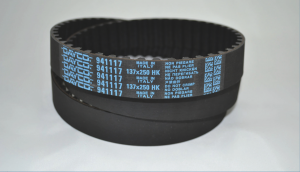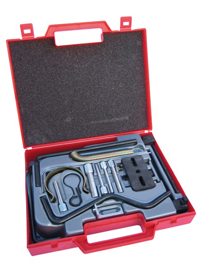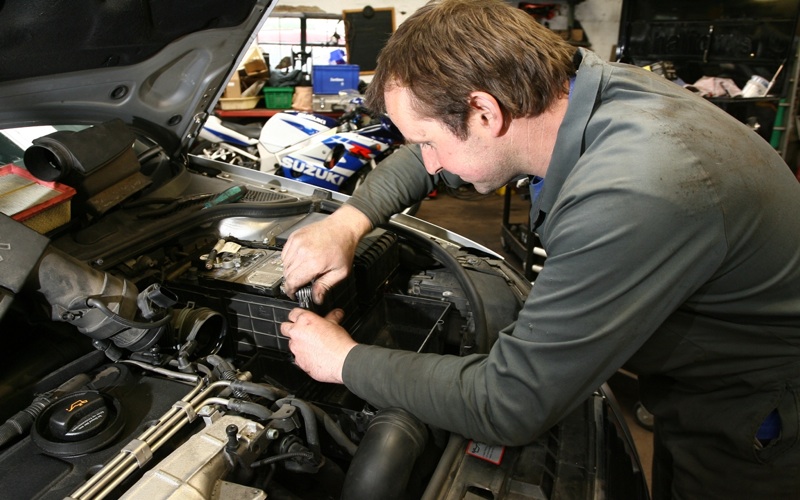By: Rob Marshal
Getting car owners to understand why ignoring timing belt replacement intervals are akin to having the sword of Damocles hanging over their cylinder heads can be tricky. It can be even harder to persuade them that time and date schedules apply just as much as mileage, because timing belts wear faster when the car is driven in low-mileage, stop-start situations. And car makers have been known to reduce timing system maintenance intervals over a model’s lifecycle, so having access to up-to-date data is vital for garages and parts suppliers. Naturally, the motor trade is well-acquainted with dry timing belt changes. Realising that failure of any tensioners and pulleys will destroy the belt, manufacturers produce and factors supply a kit of parts, rather than just the belt.

ANCILLARY PARTS
Garages and factors should check whether the water pump is included within the box. Whether driven by the timing belt, or not, the pump should be changed at the same time. Factors, therefore, will need to check and inform garages that the water pump can be supplied separately, if required, especially for older vehicles. After the packaging has been opened, the replacement water pump may differ from the removed part. Garages should not presume that the factor has made an error but it is not a bad idea for the supplier to highlight the reasons for any technical changes, to save an inconvenient parts return. Perhaps the most obvious example is the switchable water pump, employed by Volkswagen Group does away with the collar but requires the solenoid valve from the old pump to be swapped over to avoid logging an engine fault code. While a possible upside is reliability, Tim Adams, Schaeffler’s INA Product Specialist, advises that the customer may notice a fuel consumption hit: “By fitting a non-switchable pump, you are changing the design parameters of the engine, by altering the way the cooling system operates. There is no shroud on the nonswitchable pump, therefore, the engine will just warm up eventually, generating more CO2 as it does so,” he states.

FEAD ME
Car makers specify timing belt replacement intervals, but the front-end auxiliary drive (FEAD) tends to be ignored. Many manufacturers advise a simple ‘check’ at every service, which involves not just examining the belt for cracks but measuring the ribs’ depth. Yet, should the FEAD belt break, 1.6- and 2.0-litre engines. To reduce fuel consumption and CO2 emissions, the OE part possesses an ECU-controlled collar, so that the impeller cannot circulate the coolant, when the engine is cold. Charles Figgens, Technical Marketing Manager at the Bilstein Group says the system is not perfectly reliable: “The control collar can become seized, or the plastic impeller can break up, or come away from the shaft,” he says. Therefore, a solid-drive pump may be supplied, which it can enter the timing belt cover, wrap around the timing gear and, potentially, destroy the engine. We have even seen timing tensioner mounts being snapped off an aluminium engine block, such are the forces involved. Adams recommends that the FEAD system’s main parts are replaced simultaneously with the timing belt kit, because both systems have covered the same mileage and are exposed to the same wear conditions. “Many vehicles that have stop/start systems are recommending replacement at the same time of an advised service interval,” adds the Bilstein Group’s Figgens. As with the timing drive, the FEAD should be viewed as a system. Factors, therefore, should supply not just the belt and tensioners/idlers but, possibly, the alternator pulley, too. Overrunning Alternator Pulleys (OAP) and Overrunning Alternator Decouplers (OAD) are essential systems that increase belt life. Replacing them requires special tools and it is a good idea for factors to enquire if the technician has these to hand. From a garage perspective, the car owner may be hesitant, when presented with a quote that includes replacing the FEAD drive. Should this work not be authorised, a factor may wish to advise the garage to indemnify itself against severe engine damage, resulting from a broken FEAD belt.
WET BELTS
In the quest to reduce CO2 emissions, some timing belts run within the engine to reduce friction. While it is unclear that poor design and/or materials are to blame, we are aware of one manufacturer, Stellantis, changing the specifications of its belts, supplied through dealership parts counters. It has also reduced the official replacement intervals from |10 years/100,000 miles to six years/60,000 miles on post-2017 1.2-litre PureTech engined Citroens, DSs and Peugeots. Nicola Jenkins,
Head of Corporate & Internal Communications at Stellantis, said there is a recall, related to the braking assistance system that could be damaged by timing belt degradation, but added that the problem is linked to engine oil ageing.
The United Kingdom Lubricants Association agrees with her, highlighting the responsibility of factors to supply garages with the correct engine oil at service time and for owners to follow lubricant change schedules. Its Director-General, David Wright, advises CAT readers that, should the oil not be compatible with the belt’s elastomer and fibre construction, the teeth can break off, causing a reduction in engine synchronicity and an oil pressure drop, should they block the oil pump. “Belt-In-Oil Systems seem to be susceptible to impurities in the oil too, which would suggest that good dispersancy is needed,” he said.
CHAINS ARE NOT THE EVERLASTING SOLUTION
Despite manufacturers’ ambitions for timing chains to last as long as the engine, many fail prematurely but at least tell-tale rattles provide some warning. Even so, timing chain replacements should be considered more of a repair than maintenance. As with belts, tension is crucial and, because it is influenced by oil pressure, any weakness in the lubrication system increases the risk of the chain jumping over the sprockets’ teeth.
David Wright reasons that, just like belt-in-oil applications, selecting the correct oil and changing it on time is essential to chain longevity.
“There are now requirements in the API SP, ILSAC GF-6, ACEA A7/B7 and ACEA C6 industry specifications for the ‘Sequence X’ timing chain wear test. This uses a 2.0-litre Ford EcoBoost engine to test for the engine oil’s ability to protect against soot-induced timing chain wear,” he explains.

As with timing belts, timing chains should be supplied by factors as a kit of parts that include the tensioners:
Adams adds: “Sprockets wear at a faster rate than chain links. This gives the impression that the chain has stretched, but is down to excessive play, caused by the sprocket tooth wear. This can not only cause noise but also lead to problems with variable valve timing.”
Like water pumps, replacement aftermarket parts may differ from the removed OE item, but this is not a reason to worry. For instance, JLR plastic chain tensioners tend to fracture on AJ-V8 engines and so a factor may supply superior metal replacements.
AVOIDING ERRORS
Jon Roughley, Global Marketing Director for First Line Ltd. highlights that installation errors are responsible for most warranty returns.
“The vehicle manufacturers’ fitment instructions must be adhered to, since under- or over-tensioning of the belt can cause early failure. Care must be taken to ensure the belt is not bent or kinked prior to fitment,” he warns.
Garages also should avoid satisfying a customer’s demand of having a belt changed within several hours.
“If the timing belt tensioner is set to nominal on a hot engine, when it cools, the tensioner pointer will be in the wrong position and this can cause failure of the tensioner and belt drive system. It should only be changed with the engine at ambient (room) temperature,” says Adams.











Go to comments